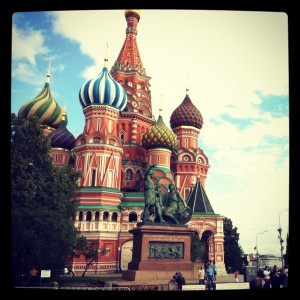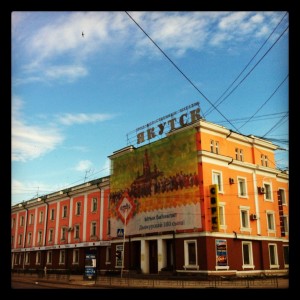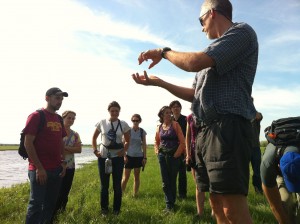Florida to North Carolina to New York to Moscow. Moscow to Yakutsk…stuck in Yakutsk…and finally to Cherskiy! Moscow was very interesting. The architecture there is unbelievably unique. Red square is an amazingly alive and vibrant place.
Yakutsk came next, where we ended up getting stuck for a couple of days. In my opinion, this ended up being wonderful because we were able to rest (!) and experience a different side of the Russian culture. In Yakutsk we got to visit a floodplain of the Lena River and get our brains switching into science gears.
Yesterday, we finally arrived in Cherskiy to wind, rain, snow, and a bit of hail! Shortly after arriving in Cherskiy, Peter and I talked with Heather and Sue about our projects. Him and I are both going to work on a moss project, but delve into different questions each of us want to investigate. Moss is an extremely important insulator for the permafrost during the summer, so I have a high interest in learning more about the mosses here. I’m thinking that in areas where there is a greater density of trees, moss coverage and biomass will decrease because of factors like less light breaking through the canopy and leaf litter on top of the mosses. If this is the case, then there should be less insulation for the permafrost, leading to a larger portion of the permafrost to become active in the summer time. This could be important for several reasons. We’re going to talk some again today and figure out how we’re going to measure everything. I’ll write more about my project later this week and add some pictures from Cherskiy as well!







Comments(2)-
-
Andy Bunn says
July 1, 2012 at 8:39 pmMoss! Great avenue for a student project.
John Schade says
July 2, 2012 at 12:53 pmInteresting idea, the impact of trees on active layer depth through changes in moss. I wonder what the impacts on soil nitrogen cycling and microbial activity might be, and how that might influence transport of nutrients down hillslopes during spring flooding? Soil enzyme activities (ask Kate B. about that if you are interested)? This would be a new research direction for the group, I think.